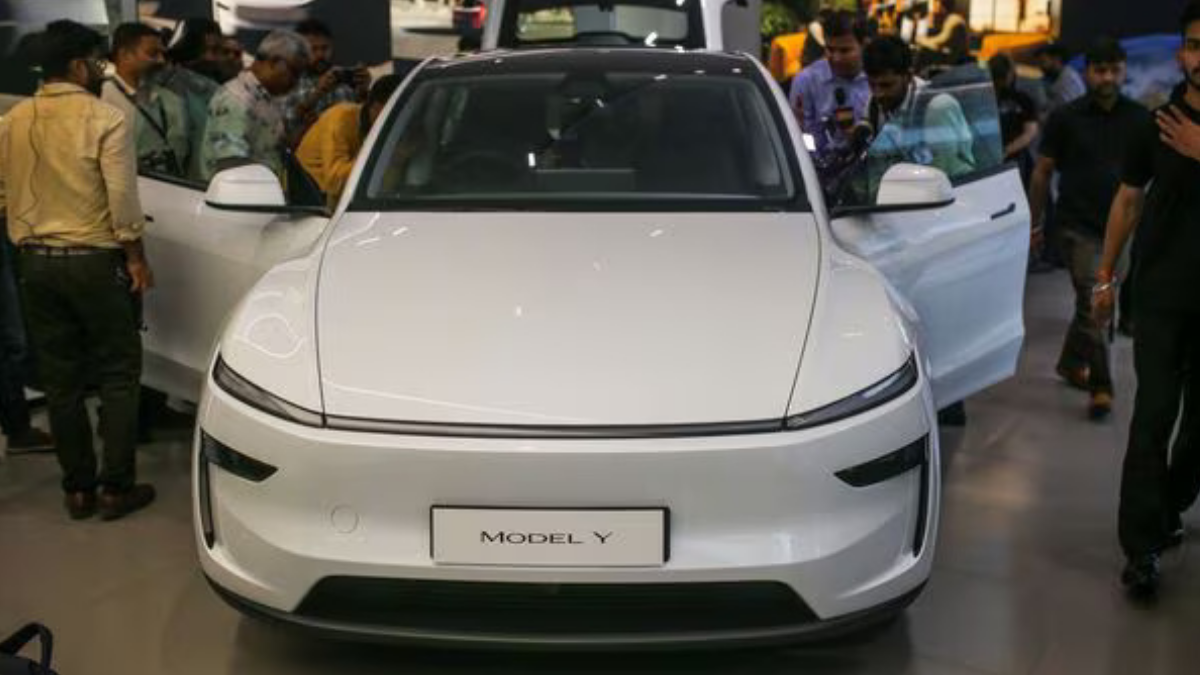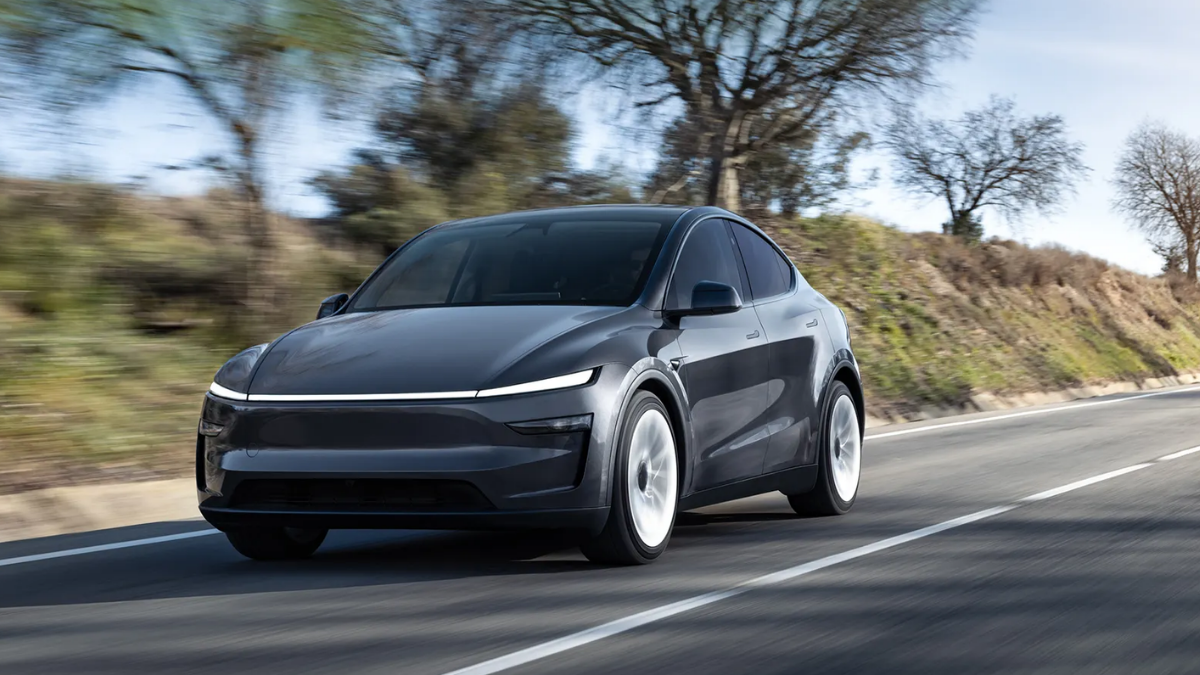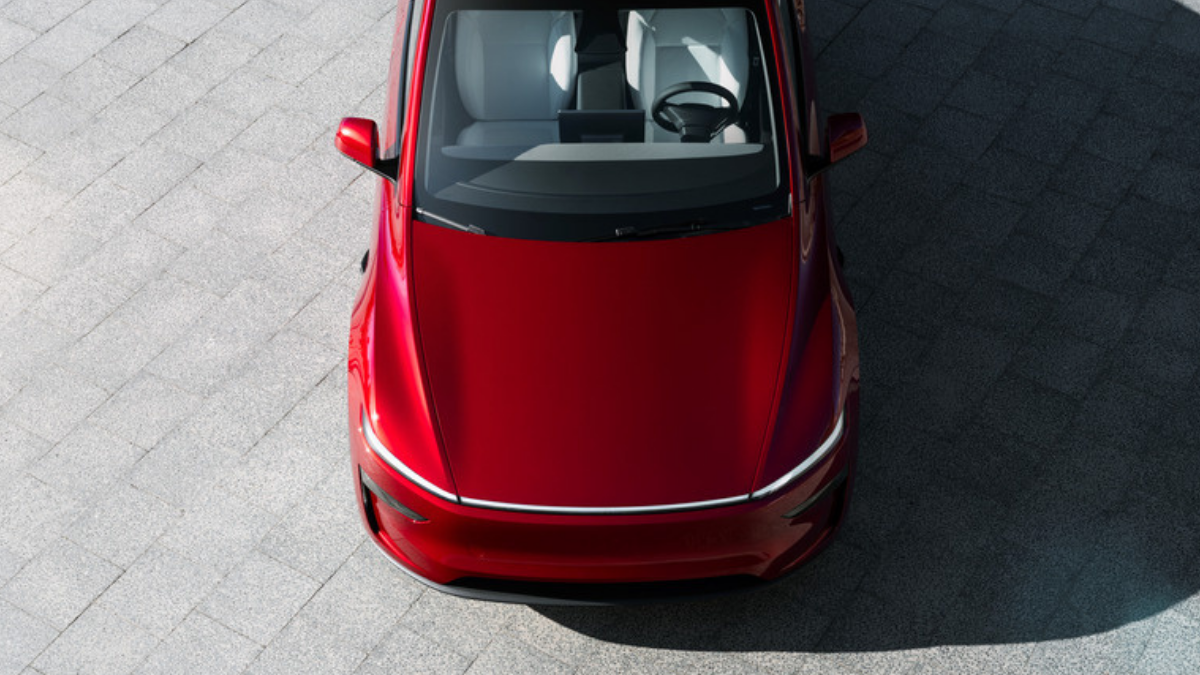Tesla CEO Elon Musk has finally pulled back the curtain on one of the automotive industry’s most anticipated secrets. The company’s long-awaited affordable electric vehicle won’t be an entirely new model, it’s going to be a stripped-down version of the popular Model Y crossover. This revelation, shared during Tesla’s second-quarter earnings call in July 2025, marks a significant shift in strategy for the electric vehicle pioneer.

But what does this mean for Tesla’s future, and more importantly, what does it mean for consumers looking to join the electric revolution without breaking the bank? The answer lies in understanding both the opportunities and challenges this approach presents.
The Reality Behind Tesla’s Affordable EV Strategy
When Musk casually mentioned “It’s just a Model Y. Let the cat out of the bag there,” he was addressing years of speculation about Tesla’s entry-level vehicle. The decision to create a budget variant of an existing model rather than developing an entirely new platform represents both pragmatic business sense and potential missed opportunity.
Tesla’s approach mirrors strategies used by luxury automakers for decades take a successful platform and create multiple price points through strategic feature removal and component substitution. This methodology allows companies to leverage existing production lines, reduce development costs, and accelerate time to market.
The timing couldn’t be more critical. Tesla has been grappling with declining sales for two consecutive quarters, with second-quarter 2025 earnings dropping 16% to $1.17 billion. Meanwhile, Chinese competitors like Xiaomi are gaining ground with vehicles like the YU7 electric SUV, which received over 200,000 orders in just three minutes at a competitive $35,000 price point.
What to Expect from the Budget Model Y
While Tesla hasn’t released comprehensive specifications, industry analysis suggests several areas where cost reduction will likely occur. The most obvious target is the battery pack expect a smaller capacity unit that reduces range but significantly cuts costs. This approach has proven successful for other manufacturers entering budget segments.
Interior modifications will likely be substantial. Premium features such as the rear 8-inch touchscreen, active noise cancellation, and high-end materials will probably be eliminated or replaced with more cost-effective alternatives. The focus will shift from luxury to functionality, maintaining the core Tesla experience while removing expensive flourishes.
Production is expected to begin in August or September 2025, with Tesla targeting a price point around $30,000 or potentially lower. This represents a significant reduction from the current Model Y pricing of $37,490 for the long-range rear-wheel drive variant and $41,490 for the all-wheel drive version.
Market Pressures Driving the Decision
Tesla’s move toward a budget Model Y isn’t occurring in a vacuum. The company faces multiple headwinds that make affordable pricing crucial for maintaining market position. The impending discontinuation of the $7,500 Federal Tax Credit on September 30, 2025, will effectively increase Tesla prices by that amount, making affordability even more critical.
Regulatory credit revenue, historically a significant profit source for Tesla, has plummeted 51% in Q2 2025 compared to the previous year. This $441 million revenue decline stems from policy changes that reduce traditional automakers’ incentives to purchase emissions credits from EV manufacturers.
Competition from Chinese manufacturers presents perhaps the greatest challenge. Companies like BYD, Xiaomi, and others are producing compelling electric vehicles at price points that undercut Tesla significantly. The success of vehicles like the Xiaomi YU7 demonstrates robust consumer demand for affordable electric options.
Strategic Implications and Market Impact
Tesla’s decision to pursue a stripped-down Model Y approach rather than developing a completely new affordable platform reveals important strategic priorities. The company is choosing speed and cost-efficiency over innovation a departure from its traditional approach of revolutionary product development.
This strategy offers several advantages. Existing production infrastructure can be utilized with minimal modification, reducing capital expenditure requirements. Quality control processes are already established, potentially avoiding the typical challenges associated with new model launches. Supply chain relationships and component sourcing can leverage existing agreements and volumes.
However, this approach also carries risks. The stripped-down model may feel like a compromise rather than a purpose-built affordable vehicle. Consumers might perceive it as Tesla offering “less car for less money” rather than “smart car for smart money.” Brand positioning could suffer if the budget variant feels significantly inferior to the standard Model Y.

Global Market Considerations
The budget Model Y’s impact will vary significantly across different markets. In developed markets like the United States and Europe, the vehicle could attract price-sensitive consumers who have been waiting for Tesla accessibility. The combination of brand cachet and improved affordability might capture significant market share from both traditional automakers and new EV entrants.
Emerging markets, particularly India, represent perhaps the greatest opportunity. Tesla recently launched operations in India with the standard Model Y, but pricing remains prohibitive for most consumers. A budget variant could dramatically expand Tesla’s addressable market in price-sensitive regions.
Chinese market dynamics present unique challenges. Despite the budget Model Y’s lower pricing, Chinese competitors offer compelling alternatives with competitive features and local market advantages. Tesla’s success in China will depend not just on pricing but on differentiation through technology, brand appeal, and service quality.
Industry-Wide Implications
Tesla’s approach to affordable EVs will likely influence industry-wide strategies. Other premium EV manufacturers may adopt similar tactics, creating budget variants of existing models rather than developing entirely new platforms. This trend could accelerate overall EV adoption by making electric vehicles accessible to broader consumer segments.
Traditional automakers may need to reevaluate their EV strategies in response. Companies that have focused on matching Tesla’s premium offerings might find themselves needing to compete on value rather than features. This shift could benefit consumers through increased choice and competitive pricing.
The success or failure of Tesla’s budget Model Y will provide valuable market data about consumer preferences. Strong performance would validate the stripped-down approach and encourage similar strategies across the industry. Poor reception might push manufacturers back toward purpose-built affordable platforms.
Looking Ahead: Challenges and Opportunities
Tesla’s budget Model Y strategy faces several critical success factors. Manufacturing execution must maintain quality standards while achieving cost targets. Marketing messaging needs to position the vehicle as smart value rather than cheap compromise. Service and support infrastructure must be ready to handle increased volume from new customer segments.
The integration of autonomous driving capabilities, as mentioned by Musk, could be a differentiating factor. If Tesla can deliver on promises of vehicles earning money through ride-sharing when not in use, the effective cost of ownership could be dramatically reduced, making even higher-priced vehicles accessible to budget-conscious consumers.
Consumer reception will ultimately determine success. Early adopters and Tesla enthusiasts might embrace the budget variant, but mainstream consumers may have different expectations. The vehicle’s positioning relative to competitors and its ability to deliver a satisfying ownership experience will be crucial.
The Path Forward for Affordable Electric Mobility
Tesla’s budget Model Y represents more than just another product launch, it’s a strategic pivot that could reshape the electric vehicle landscape. By choosing pragmatic cost reduction over revolutionary innovation, Tesla is acknowledging market realities while betting on its brand strength and existing technology advantages.
The success of this approach will have far-reaching implications for Tesla’s future and the broader EV industry. If the budget Model Y succeeds in expanding Tesla’s market reach while maintaining profitability, it could become a template for sustainable EV growth. If it fails to resonate with consumers or damages brand perception, it might push Tesla back toward more radical innovation approaches.
For consumers, the budget Model Y offers the promise of Tesla ownership at unprecedented price points. Whether that promise translates into compelling value will depend on execution, positioning, and market reception. As production ramps up in late 2025, the automotive world will be watching closely to see if Tesla’s practical approach to affordability can succeed where more ambitious efforts have struggled.
The electric vehicle revolution has always been about making sustainable transportation accessible to everyone. Tesla’s budget Model Y might just be the vehicle that finally makes that vision a reality.

FAQs: Frequently Asked Questions
Q. What is the Tesla Budget Model Y?
A. The Tesla Budget Model Y is an affordable version of Tesla’s popular Model Y SUV, designed to make electric vehicles more accessible to a broader audience by simplifying features and reducing production costs.
Q. How much will the Budget Model Y cost?
A. While the exact pricing has not been confirmed, Elon Musk has hinted that this version will be significantly cheaper than the standard Model Y, making it competitive within the entry-level EV market.
Q. What features will be included?
A. Although it will likely feature a streamlined design and fewer premium options, the Budget Model Y is expected to retain Tesla’s core offerings, such as Autopilot functionality, impressive range, and access to Tesla’s expansive Supercharger network.
Q. When will the Budget Model Y be available?
A. Tesla has not announced a specific release date yet. However, industry analysts speculate that production could begin as early as next year, following Tesla’s ramp-up of manufacturing capacities.
Q. How does it compare to other EVs in the same price range?
A. The Budget Model Y aims to provide the best value in its class with advanced technology, safety features, and Tesla’s strong brand reputation, potentially setting a new standard for affordable electric SUVs.
Click HERE For More!!